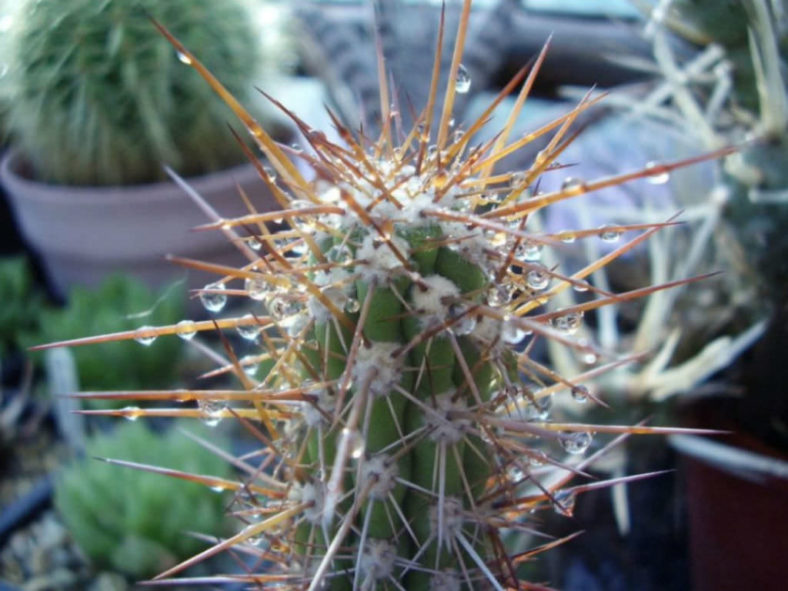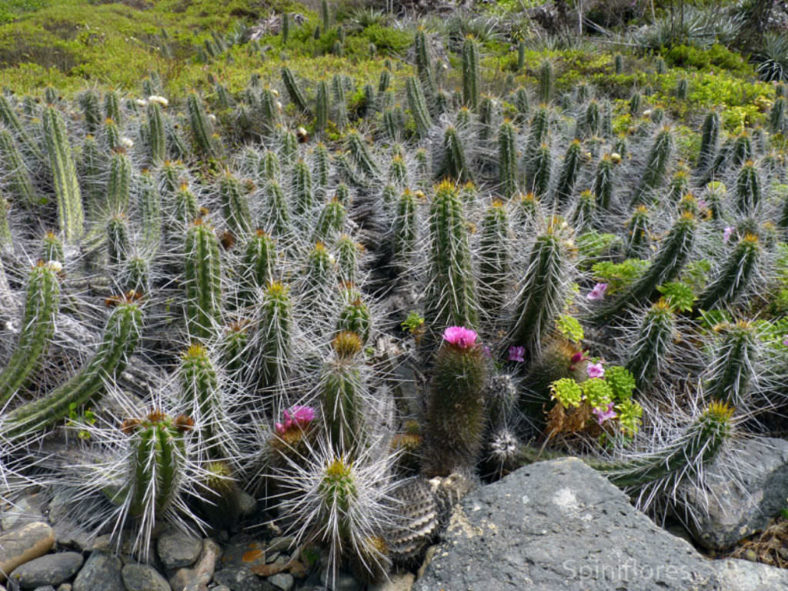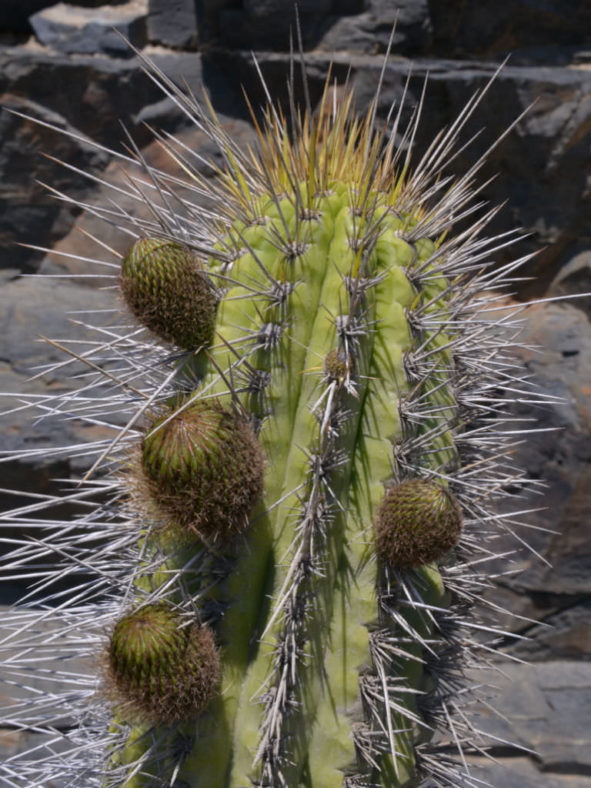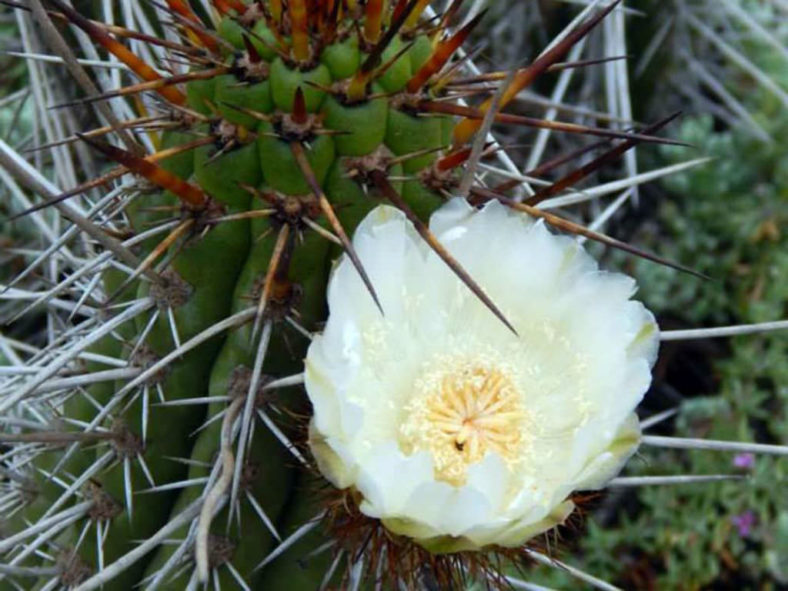Scientific Name
Eulychnia castanea Phil.
Synonym(s)
Cereus castaneus, Philippicereus castaneus
Scientific Classification
Family: Cactaceae
Subfamily: Cactoideae
Tribe: Notocacteae
Genus: Eulychnia
Description
Eulychnia castanea is a shrubby cactus with green cylindrical stems with 8 to 13 ribes lined with clusters of spines. The stems can grow up to 6.5 feet (2 m) long and 4 inches (10 cm) in diameter, ascending at first, later spreading or decumbent, and branching at the base. The spines are yellow to brown, straight, strong, unequal, and can measure up to 0.8 inches (2 cm) long. Each areole bears 6 to 10 radial and 1 to 2 central spines.
The flowers are diurnal, white, and can reach up to 2 inches (5 cm) in diameter. They appear from sides near the tip of the stems in summer.

Hardiness
USDA hardiness zones 10a to 11b: from 30 °F (−1.1 °C) to 50 °F (+10 °C).
How to Grow and Care
Eulychnia cacti are uncommon in cultivation, and only collectors with a specific interest in the genus seem to grow them. They require full sun or light shade to keep the plant compact and with strong-colored spines. The plants tend to bronze in intense light, encouraging flowering and heavy spine production. The light shadow may be useful on the hottest summer days.
These cacti require light but regular watering in summer. Let the soil dry between waterings. Then, keep the soil dry in winter.
Eulychnias need to be kept in a cool place during winter rest. They are resistant to light frost if kept on the dry side before and during cold weather. Eulychnias are hardy to 28 °F (-2 °C) in short periods.
Eulychnia likes a very coarse, mineral cactus soil mix but can become too elongated if the soil is too rich. In summer, feed with a high-potassium fertilizer.
Learn more at How to Grow and Care for Eulychnia.
Origin
Eulychnia castanea is native to Chile, along the coastline from Los Molles north to Talinay, Coquimbo.
Forms and Cultivars
Links
- Back to genus Eulychnia
- Succupedia: Browse succulents by Scientific Name, Common Name, Genus, Family, USDA Hardiness Zone, Origin, or cacti by Genus
Photo Gallery
Click on a photo to see a larger version.



